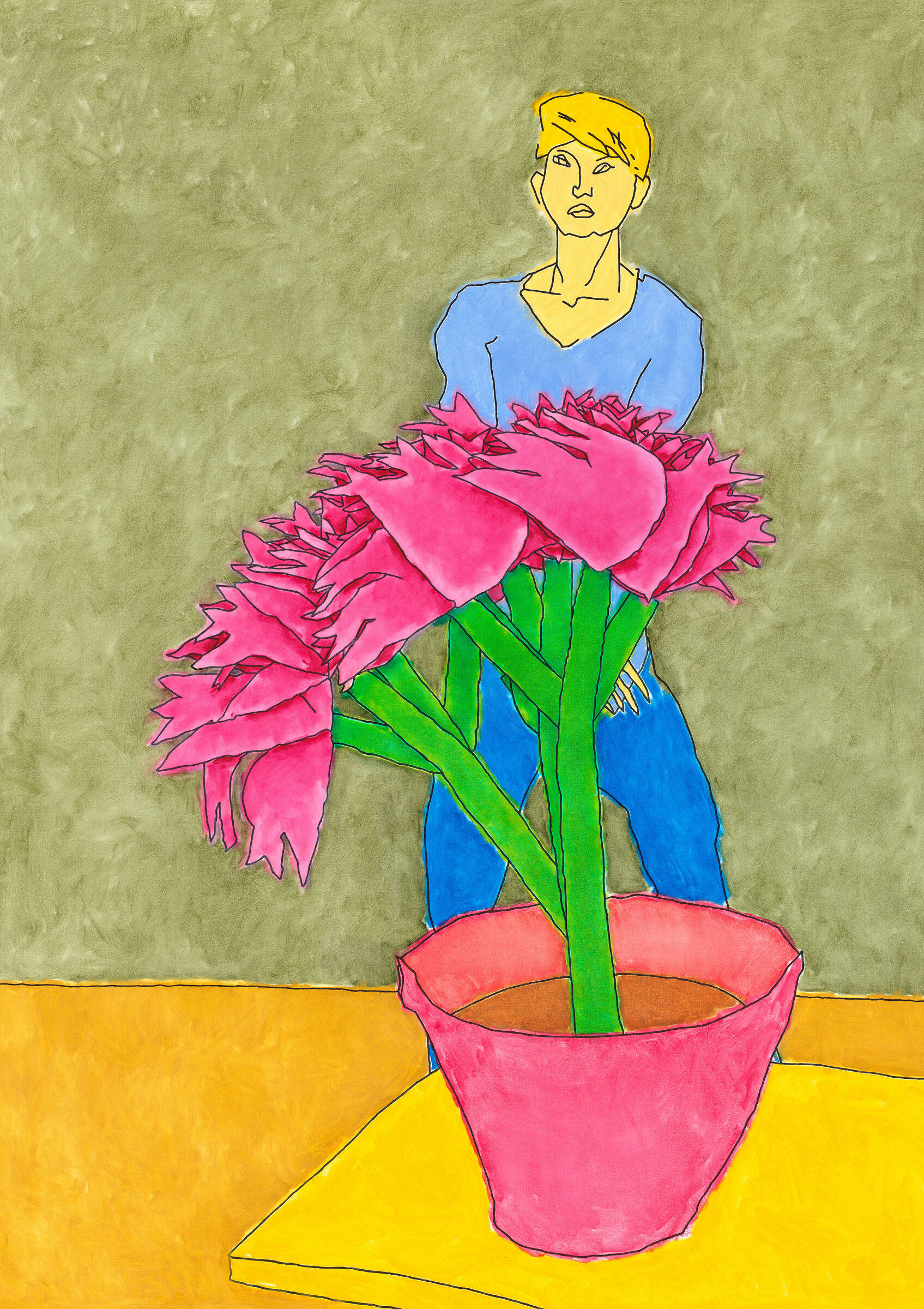Harold Cohen: AARON | Art & Artists
Feb 3–May 19, 2024
Harold Cohen: AARON | Art & Artists
The Figurative Phase
2
This section of the exhibition contains works representing a phase of AARON’s creations focused on figures, often in combination with plants or flowers. At its center is the projection of the AARON KCAT (Kurzweil CyberArt Technologies) software, which Cohen produced and released with computer scientist Raymond Kurzweil in 2001. KCAT became a signature iteration of AARON’s output and reflected Cohen’s efforts to make original art available to a greater number of people at a low price, as he released it in a screen-saver version.
AARON’s method of creating images differs fundamentally from that of currently popular AI software such as DALL-E, Midjourney, or Stable Diffusion, which use algorithms trained to make associations between images and text descriptions and generate their output from existing images on the basis of a user’s text prompts. AARON is a procedural system: it mimics human decision-making by processing its bodies of knowledge through instructions for completing tasks and if-then rules.
Cohen sought to always program the cognitive processes of a painter into his algorithms, imitating the work of understanding the relationship between line and form in representation as an abstract painter would. Cohen’s unique code creates legible figures and objects in infinite combinations with a spatial knowledge of the third dimension.
Harold Cohen, Susan with Plant, 1991
Susan with Plant exemplifies how the complex rules in Harold Cohen’s AARON software work together to generate a legible image with abstract elements and fine details. The plotter painting represents a stage in AARON’s evolution, from approximately 1989 onward, in which the composition uses a fully three-dimensional knowledge base. The plotted lines and acrylic color delineate and block areas of the canvas surface to create an environment, with objects placed in the foreground and a figure in the middle ground in front of a textured wall in the background. Figurative works like Susan with Plant demonstrate AARON’s understanding of spatial and anatomical structure, as well as human posture and variations of skin color. The positioning of the eyes, nose, and mouth is not symmetrical but arranged at axes—indicating Cohen’s unique rules for painterly representation. Cohen saw AARON’s figurative works as an abstract form of self-portraiture, an attempt to codify how he, and viewers, understand images.

